Is there still space for export credit agencies?
Tuesday, 23 March 2021 12:16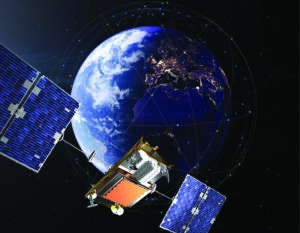
Once a critical pillar for supporting commercial space projects around the world, export credit agencies have faded from the limelight in an industry awash with financing alternatives.
But as an Indonesian satellite secures ECA support and Canada’s Telesat explores the option for its LEO constellation, there is still a role to play for these state-backed institutions.
SpaceX marks anniversary of first launch with Starlink mission
Tuesday, 23 March 2021 11:24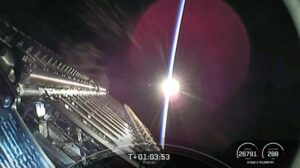
WASHINGTON — A SpaceX Falcon 9 launched another set of Starlink satellites March 24, 15 years to the day after the company’s first, unsuccessful launch.
The Falcon 9 lifted off from Space Launch Complex 40 at Cape Canaveral Space Force Station at 4:24 a.m.
Satellites map record floods in Australia
Tuesday, 23 March 2021 10:30 Image:
Stretches of land across New South Wales, Australia, have been hit with torrential rain leading to record-breaking floods. Data from the Copernicus Sentinel-1 mission are being used to map flooded areas to help relief efforts.
Image:
Stretches of land across New South Wales, Australia, have been hit with torrential rain leading to record-breaking floods. Data from the Copernicus Sentinel-1 mission are being used to map flooded areas to help relief efforts. Is the nearest star cluster to the Sun being destroyed?
Tuesday, 23 March 2021 09:00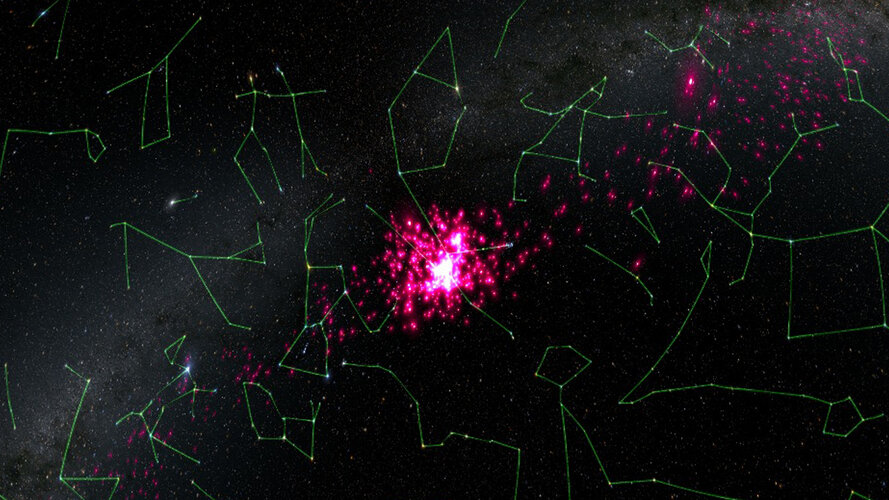
Data from ESA’s Gaia star mapping satellite have revealed tantalising evidence that the nearest star cluster to the Sun is being disrupted by the gravitational influence of a massive but unseen structure in our galaxy.
Kymeta Interoperability with Kepler LEO sats promises powerful connectivity of the Kymeta u8 Terminal
Tuesday, 23 March 2021 08:20 Kymeta and Kepler Communications have announced the successful demonstration of the Kymeta u8 Terminal with LEO satellite acquisition, tracking and throughput measurements, during extreme cold weather temperatures. The collaboration with Kepler supports Kymeta's goal to develop solutions that are future proof with a clear LEO upgrade path and compatible with growing mega constellations.
In
Kymeta and Kepler Communications have announced the successful demonstration of the Kymeta u8 Terminal with LEO satellite acquisition, tracking and throughput measurements, during extreme cold weather temperatures. The collaboration with Kepler supports Kymeta's goal to develop solutions that are future proof with a clear LEO upgrade path and compatible with growing mega constellations.
In Rocket Lab launches 100th satellite
Tuesday, 23 March 2021 08:20 Rocket Lab, a leading launch provider and space systems company, has successfully launched its 19th Electron mission and deployed six spacecraft to orbit for a range of government and commercial customers. The mission, named 'They Go Up So Fast,' also deployed Rocket Lab's latest in-house manufactured Photon spacecraft to build flight heritage ahead of the upcoming CAPSTONE mission to the Moon f
Rocket Lab, a leading launch provider and space systems company, has successfully launched its 19th Electron mission and deployed six spacecraft to orbit for a range of government and commercial customers. The mission, named 'They Go Up So Fast,' also deployed Rocket Lab's latest in-house manufactured Photon spacecraft to build flight heritage ahead of the upcoming CAPSTONE mission to the Moon f Pentagon wants new Command and Control System to counter hypersonic threats
Tuesday, 23 March 2021 08:20 In 2017, Russia became the first country in the world to deploy nuclear-capable hypersonic missiles, with their development begun after the US withdrew from the Anti-Ballistic Missile Treaty and started building a missile shield. Moscow sees the weapons as a guarantee against decapitation strikes. China also has a successful hypersonics programme.
The US Missile Defence Agency (MDA), the a
In 2017, Russia became the first country in the world to deploy nuclear-capable hypersonic missiles, with their development begun after the US withdrew from the Anti-Ballistic Missile Treaty and started building a missile shield. Moscow sees the weapons as a guarantee against decapitation strikes. China also has a successful hypersonics programme.
The US Missile Defence Agency (MDA), the a RAF reportedly braced for 'Space War' over claims Russia tested 'anti-satellite weapons'
Tuesday, 23 March 2021 08:20 The head of the UK Space Directorate, Air Vice-Marshal Harvey Smyth, expressed concern in December 2020 over Russia having allegedly conducted a new space test of anti-satellite weapons, without providing any evidence, claiming the "consequences of miscalculations and accidents have the potential to be catastrophic".
Britain's Royal Air Force is facing an immediate need to "catch up with i
The head of the UK Space Directorate, Air Vice-Marshal Harvey Smyth, expressed concern in December 2020 over Russia having allegedly conducted a new space test of anti-satellite weapons, without providing any evidence, claiming the "consequences of miscalculations and accidents have the potential to be catastrophic".
Britain's Royal Air Force is facing an immediate need to "catch up with i NASA will attempt first off-world flight in early April
Tuesday, 23 March 2021 07:57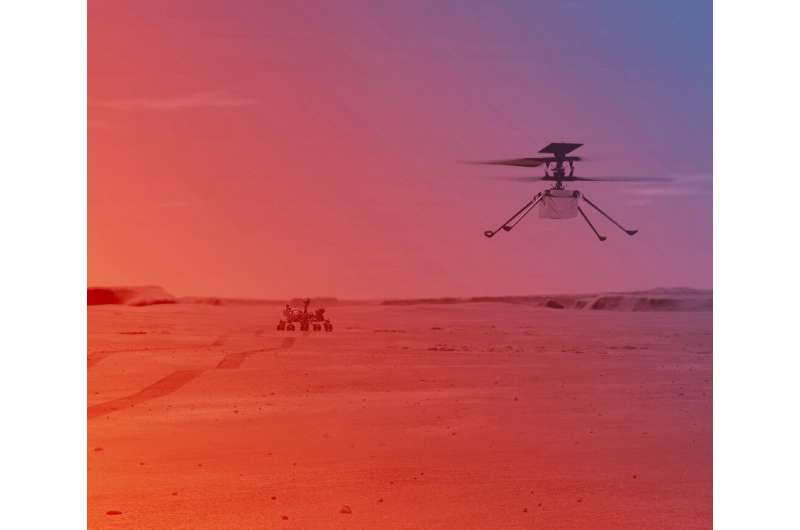
NASA is targeting early April for the Ingenuity Mars Helicopter to make the first attempt at powered, controlled flight on another planet, the space agency said Tuesday.
Right now, the ultra-light aircraft remains fixed to the belly of the Perseverance rover, which touched down on the Red Planet on February 18.
On Sunday, Perseverance dropped the debris shield that had protected Ingenuity during landing, and is currently making its way to the "airfield" where Ingenuity will attempt its flights.
Once there, it will have 30 Martian sols—equal to 31 Earth days—to carry out its mission.
"The best guess we have right now is April 8," for the first flight, said Bob Balaram, Mars Helicopter chief engineer at the Jet Propulsion Laboratory, though he added it could be sooner or later by a few days.
Balaram revealed for the first time that Ingenuity is carrying a small piece of cloth that covered one of the wings of the Wright brothers' first aircraft that achieved the first powered flight on Earth at Kitty Hawk in 1903, to pay tribute to the milestone.
Part of Wright brothers' 1st airplane on NASA's Mars chopper
Tuesday, 23 March 2021 07:34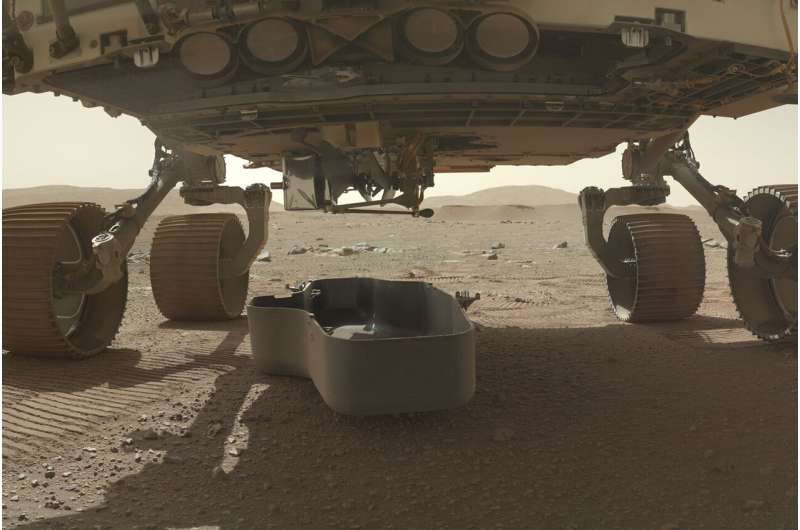
A piece of the Wright brothers' first airplane is on Mars.
NASA's experimental Martian helicopter holds a small swatch of fabric from the 1903 Wright Flyer, the space agency revealed Tuesday.
NASA Ingenuity Mars Helicopter prepares for first flight
Tuesday, 23 March 2021 05:41 NASA is targeting no earlier than April 8 for the Ingenuity Mars Helicopter to make the first attempt at powered, controlled flight of an aircraft on another planet. Before the 4-pound (1.8-kilogram) rotorcraft can attempt its first flight, however, both it and its team must meet a series of daunting milestones.
Ingenuity remains attached to the belly of NASA's Perseverance rover, which to
NASA is targeting no earlier than April 8 for the Ingenuity Mars Helicopter to make the first attempt at powered, controlled flight of an aircraft on another planet. Before the 4-pound (1.8-kilogram) rotorcraft can attempt its first flight, however, both it and its team must meet a series of daunting milestones.
Ingenuity remains attached to the belly of NASA's Perseverance rover, which to Pandora Mission Would Expand NASA's Capabilities in Probing Alien Worlds
Tuesday, 23 March 2021 05:41 In the quest for habitable planets beyond our own, NASA is studying a mission concept called Pandora, which could eventually help decode the atmospheric mysteries of distant worlds in our galaxy. One of four low-cost astrophysics missions selected for further concept development under NASA's new Pioneers program, Pandora would study approximately 20 stars and exoplanets - planets outside of our
In the quest for habitable planets beyond our own, NASA is studying a mission concept called Pandora, which could eventually help decode the atmospheric mysteries of distant worlds in our galaxy. One of four low-cost astrophysics missions selected for further concept development under NASA's new Pioneers program, Pandora would study approximately 20 stars and exoplanets - planets outside of our Lockheed Martin and Omnispace explore space-based 5G Global Network
Tuesday, 23 March 2021 05:41 Omnispace and Lockheed Martin have entered into a strategic interest agreement to explore jointly developing 5G capability from space. The proposed global 5G standards-based non-terrestrial network (NTN) would offer commercial, enterprise and government devices ubiquitous communications worldwide. This type of network has the potential to redefine mobile communications, benefiting users requirin
Omnispace and Lockheed Martin have entered into a strategic interest agreement to explore jointly developing 5G capability from space. The proposed global 5G standards-based non-terrestrial network (NTN) would offer commercial, enterprise and government devices ubiquitous communications worldwide. This type of network has the potential to redefine mobile communications, benefiting users requirin NanoAvionics expands into microsatellite market with MP42 bus
Tuesday, 23 March 2021 05:41 Smallsat mission integrator NanoAvionics, which has gained recognition from the industry for its nanosatellite technology in recent years, aims to capture a share of the lucrative microsatellite segment with the first modular microsat bus in the industry, the "MP42". With 10,000 smallsats scheduled to be launched over the next 10 years, NanoAvionics expects to grow fivefold in size across its en
Smallsat mission integrator NanoAvionics, which has gained recognition from the industry for its nanosatellite technology in recent years, aims to capture a share of the lucrative microsatellite segment with the first modular microsat bus in the industry, the "MP42". With 10,000 smallsats scheduled to be launched over the next 10 years, NanoAvionics expects to grow fivefold in size across its en 

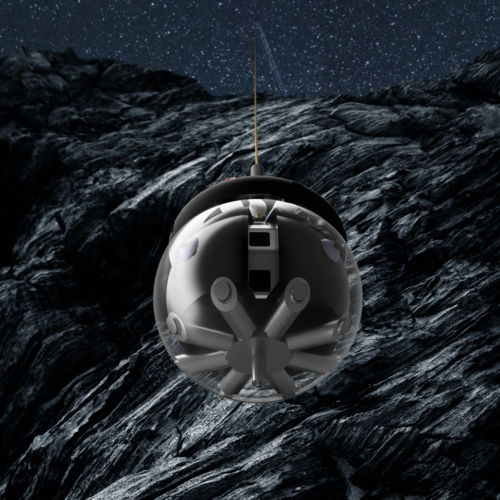 Image:
Lunar cave explorer
Image:
Lunar cave explorer